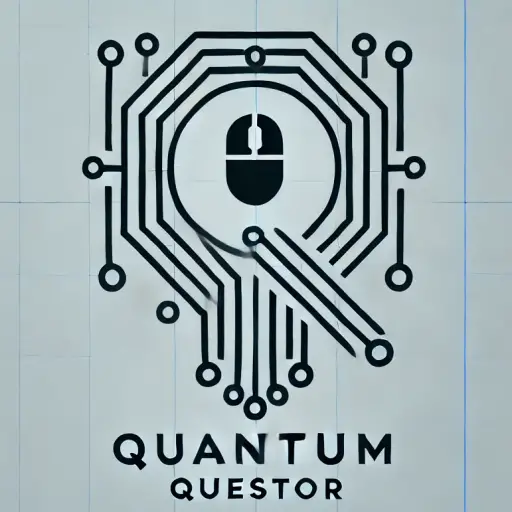
Understanding OpenAI Prompts
The advent of artificial intelligence has transformed the way we interact with technology. At the forefront of this revolution is OpenAI, a pioneering organization known for its cutting-edge AI models. Among its various offerings, OpenAI prompts have gained prominence as powerful tools that enable users to leverage AI capabilities efficiently. But what exactly are OpenAI prompts, and how can they be used effectively? This article delves into the concept of OpenAI prompts, exploring their applications and offering practical tips on maximizing their potential.
OpenAI prompts are essentially inputs or commands given to an AI model to elicit a desired response or action. These prompts can be textual or contextual, guiding the AI to generate text, solve problems, or provide insights based on the input provided. The effectiveness of an AI-generated outcome largely depends on how well the prompt is structured, which makes understanding and crafting efficient prompts crucial for users.
Types of OpenAI Prompts
There are several types of OpenAI prompts that cater to different needs and applications. Some common types include:
- Text Completion Prompts: These prompts are used to generate text based on a given input. They are particularly useful in content creation, where the AI can complete sentences or paragraphs based on a starting point.
- Question-Answering Prompts: As the name suggests, these prompts are designed to answer specific questions posed by the user. They are commonly used in customer support and information retrieval tasks.
- Instructional Prompts: These prompts guide the AI to perform specific tasks or follow a series of instructions, making them ideal for automation and process-oriented applications.
Crafting Effective OpenAI Prompts
The key to unlocking the full potential of OpenAI lies in crafting effective prompts that elicit accurate and relevant responses. Here are some strategies to consider when creating your own prompts:
Be Specific
A well-crafted prompt is clear and specific. Ambiguous or vague instructions may lead to inaccurate outputs. For instance, instead of asking “Tell me about technology,” a more specific prompt would be “Explain the impact of artificial intelligence on modern healthcare.” The latter provides context and direction, leading to more targeted responses from the AI.
Provide Context
Contextual information helps the AI understand the environment or background related to the prompt. Including relevant details ensures that the generated response aligns with your expectations. For example, when requesting a report summary, specifying “Provide a summary of the latest trends in renewable energy” offers necessary context for generating accurate content.
Use Examples
Examples clarify your expectations from the AI model. By including sample answers or scenarios within your prompt, you guide the AI towards producing similar outputs. For instance, if you’re seeking creative writing suggestions, including an example passage can help set the tone and style you desire.
Applications of OpenAI Prompts
The versatility of OpenAI prompts makes them applicable across various domains and industries. Here are some prominent use cases:
Content Creation
In the realm of content creation, OpenAI prompts can significantly streamline workflows by generating drafts, headlines, and even full articles based on given topics. This capability is invaluable for bloggers, journalists, and marketers aiming to produce high-quality content efficiently.
Customer Support Automation
Automating customer support through question-answering prompts reduces response times and improves service quality. By integrating these prompts into chatbots or virtual assistants, businesses can provide instant solutions to common queries while freeing up human agents for more complex issues.
Educational Tools
OpenAI prompts enhance educational experiences by providing interactive learning opportunities. Students can engage with AI tutors that respond dynamically to their questions, offering explanations and resources tailored to individual learning needs.
The Future of OpenAI Prompts
The evolution of AI technologies continues at an unprecedented pace, promising exciting advancements in how we utilize OpenAI prompts. As models become more sophisticated, we can expect increased accuracy and expanded capabilities across various applications.
Integration with Emerging Technologies
The integration of OpenAI with other emerging technologies such as virtual reality (VR) and augmented reality (AR) could revolutionize interactive experiences. Imagine using VR environments guided by AI-generated instructions or AR overlays providing real-time data analysis—these scenarios exemplify potential future developments driven by innovative uses of OpenAI prompts.
Enhanced Personalization
A key trend in technological advancement is personalization—tailoring experiences to individual preferences and needs. Future iterations of OpenAI models may offer even greater personalization capabilities through adaptive learning algorithms that refine outputs based on user interactions over time.
{“@context”:”https://schema.org”,”@type”:”Article”,”headline”:”Mastering OpenAI Prompts: A Comprehensive Guide for Tech Enthusiasts”,”description”:”Explore how to effectively use OpenAI prompts for creative and technical applications.”,”author”:{“@type”:”Person”,”name”:”Tech Lifestyle Blog”},”publisher”:{“@type”:”Organization”,”name”:”Tech Lifestyle Blog”,”logo”:{“@type”:”ImageObject”,”url”:”https://www.example.com/logo.png”}},”datePublished”:”2023-10-30″,”mainEntityOfPage”:{“@type”:”WebPage”,”@id”:”https://www.example.com/mastering-openai-prompts”}}



